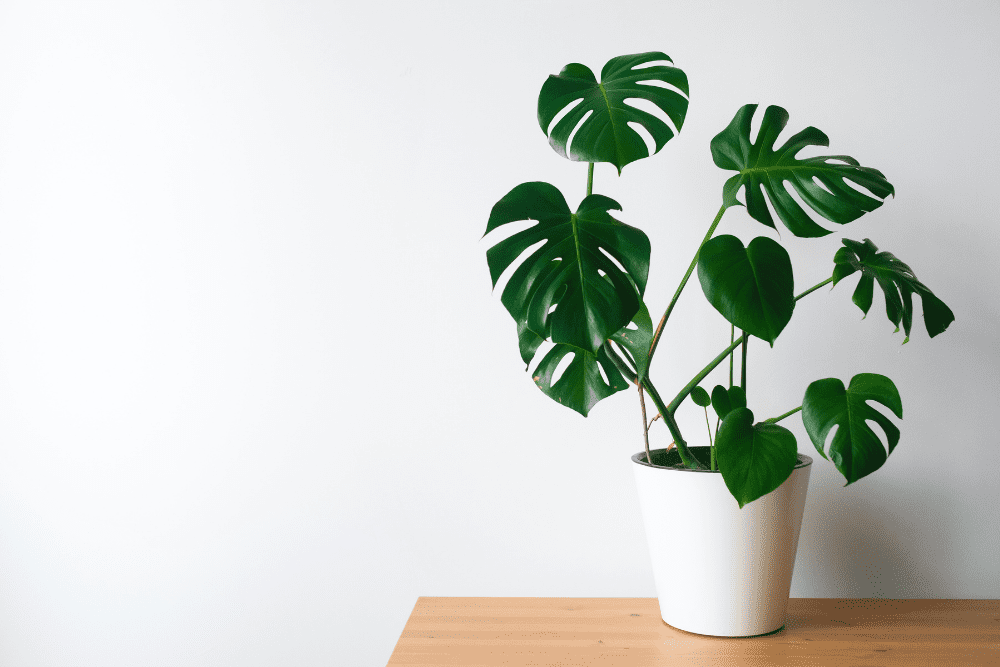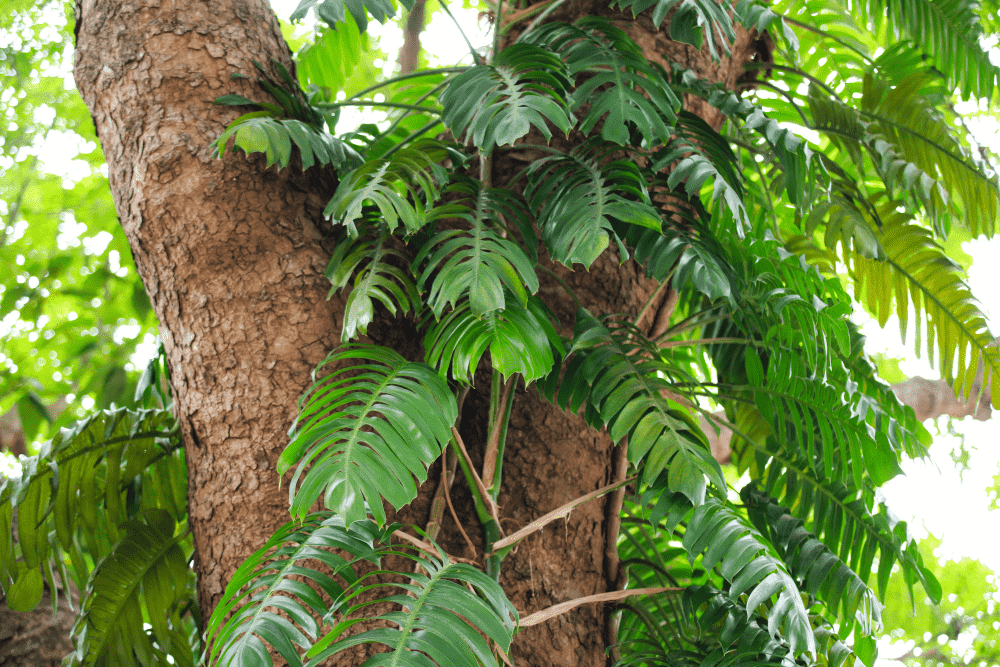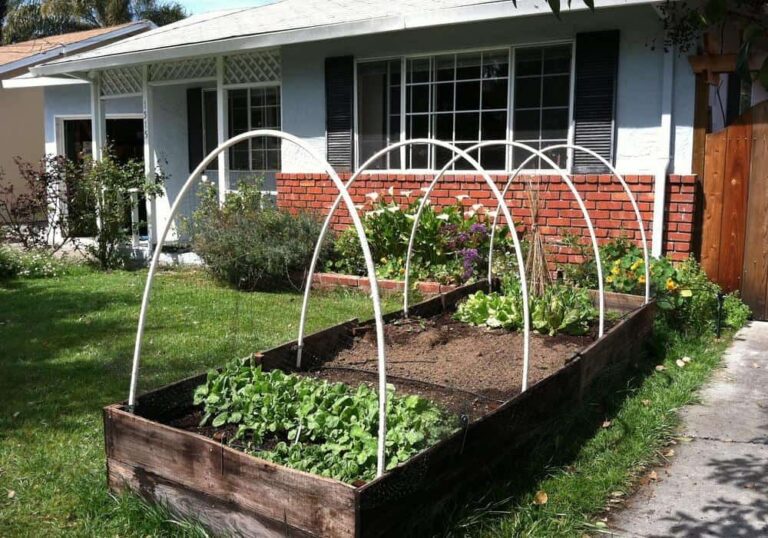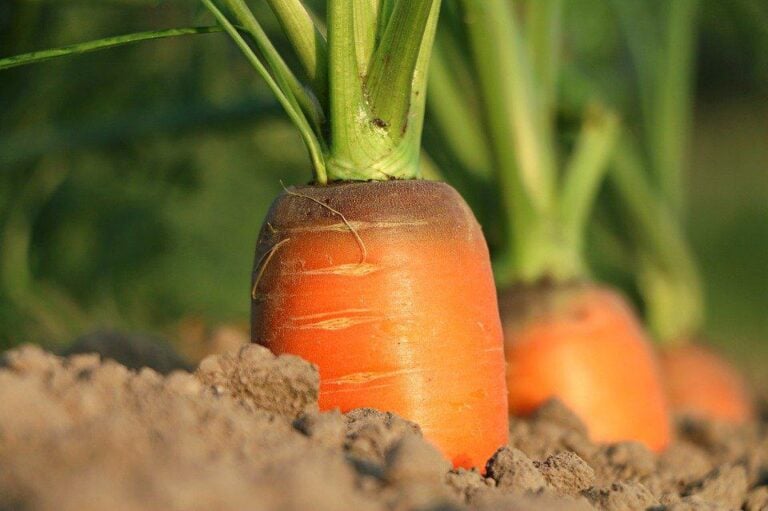Split Leaf Philodendron: The Ultimate Care Guide
Part of the Araceae family, the split leaf philodendron is one of the most reliable and dependable houseplants in the world. This plant is known for its large glossy leaves featuring splits and deep clefts, making the split leaf philodendron a stand-out plant in any household.
Interestingly, due to the beautiful appearance of the leaves, the split philodendron is often mistaken for the monstera deliciosa, otherwise known as the Swiss cheese plant.
While it’s an easy mistake to make amongst beginners, it’s important to know the difference between the plants to understand the split philodendron’s care requirements.
Whether you’re in the market for a split leaf philodendron or you’ve recently introduced one into your plant family, here is the ultimate care guide for the split leaf philodendron!
Split Leaf Philodendron Overview
The split leaf philodendron is a large flowering plant in the Araceae family that is native to Central America. It can be most commonly found in the rainforests of Paraguay, Brazil, and Argentina.
This tropical plant has been used as a resource by Indigenous tribes for a variety of reasons – from the plant’s ability to grow berries in its natural habitat to the wide leaves that can be used to hold water, make clothes, and more.
In its natural habitat, the split leaf philodendron is known to grow to towering heights with enormous leaves. However, the plant is remarkably reliable and easy to care for in a home despite its native climate – it just doesn’t grow as large.
Interestingly, the name for the split leaf philodendron derives from the Greek word “philo”, meaning love or affection. “Dendron” is another Greek word translating to tree.
As the plant’s characteristically large leaves are shaped somewhat like hearts, the term “philodendron” was coined.
Difference Between The Split Leaf Philodendron And Monstera Deliciosa

It is unfortunately common for the split leaf philodendron to be mistaken for (and often mis-sold as) the monstera deliciosa.
Both plants are popular in the houseplant community, and while they share similar characteristics in appearance and care requirements, it’s important to know the difference between the species to avoid disappointment and confusion.
The main difference between the split leaf philodendron and the Swiss cheese plant is that, while their leaves can grow to 3 feet in size, the monstera deliciosa features distinctive holes in its leaves.
The split leaf philodendron, as the name suggests, features deep splits at the edge of the leaves, and doesn’t exhibit holes.
The other key difference between the species is that the split leaf philodendron is self-heading, which means that it doesn’t require structural support to grow upwards.
The monstera deliciosa, on the other hand, is a vining plant that requires structural support through growing a system of aerial roots that grab onto nearby structures like trees.
Split Leaf Philodendron Care Guide
Lighting
In its natural habitat, split leaf philodendrons aren’t often exposed to direct sunlight due to the towering trees and other foliage in rainforests that block the sun’s rays. This means that the ideal lighting requirements for a split leaf philodendron as a houseplant are fairly similar.
The ideal place for your split leaf philodendron to reside is somewhere that receives bright and indirect sunlight. This is the general rule for most houseplants, because direct sunlight can burn the leaves and dehydrate the plant faster, resulting in an early death.
To avoid this and to keep the quality of the leaves in top shape, keep the plant in a bright room where it won’t get hit by the sun’s rays from the window.
The same rules apply for growing a split leaf philodendron outdoors! As long as the plant is in a place that receives a good amount of indirect sunlight (and maybe a couple of hours of direct sunlight if this is unavoidable), your plant will happily thrive outside.
Humidity And Temperature
As the split leaf philodendron’s natural climate is tropical rainforests, these plants thrive best in warm and quite humid conditions. No, you don’t have to replicate the exact temperature and humidity of a rainforest.
Instead, the ideal temperature for an indoor split leaf philodendron is 60 °F and higher. For outdoor split leaf philodendrons, the ideal temperature is generally between 60-85 °F.
As this isn’t always attainable throughout the year in some areas, it might be wise to plant the philodendron in a pot or container to bring it inside when the temperatures drop.
For both indoor and outdoor growing conditions, the ideal humidity level for a split leaf philodendron is around 40%.
The best ways to maintain the humidity levels is to either invest in a humidifier to keep the surrounding area in a tropical condition, or to mist your plant regularly with water.
The main problem with buying a humidifier is that they can be expensive, which isn’t always the most sustainable option – unless you have a family of tropical plants, in which a humidifier can mimic the climate of a rainforest best.
Misting your plants daily is the cheapest way to increase the humidity levels in its immediate surroundings.
If you place your plants near each other, they will all benefit from misting and will share a bubble of humidity through transpiration, allowing them to all thrive in the same conditions.
Another way to increase the humidity levels in the plant’s immediate environment is to place the pot on a pebble tray. To do this, fill a flat tray with a layer of pebbles that are about 1 inch in height.
Then, fill the tray with a small layer of water so that the water doesn’t go above the pebbles. Place the plant pot on the pebbles, and this will encourage the small layer of water to evaporate upwards to create an area of humidity. Just make sure to top up the water when necessary!
Watering
The watering requirements for a split leaf philodendron are pretty straightforward. As with most houseplants, these plants don’t like to be overwatered.
They don’t like to be underwatered either, but they’re far more resilient and patient when their soil is dry rather than when their soil is too damp.
The best way to tell whether your split leaf philodendron needs to be watered is to check the soil. Stick your finger one inch into the soil – if the soil is damp, leave it for a couple of days and check again. If the soil is bone dry, it’s time to give your plant a good soak.
Place your split leaf philodendron in a bathtub, shower, or outside. Take it out of its decorative pot and ensure that its main pot has drainage holes.
Then, pour clean water all over the soil to ensure that every part of the plant is hydrated, and keep pouring until the water starts to drain from the holes. Leave the plant to drain completely in the bathtub or outside.
Unfortunately, looking at or touching the top layer of the soil isn’t a good indicator of whether the plant needs watering. This is because the top layer of soil is constantly exposed to the air, which means it’s the first bit of the soil to dry.
Overwatering can be dangerous for a plant like a split leaf philodendron. While these plants like humidity, they don’t want to be overwatered, and there’s a clear difference between the two.
Overwatering can lead to root rot, which is essentially when the roots are drowned by stagnant or excessive water and can no longer receive the nutrients from the soil. Left untreated, root rot can lead to the plant’s death.
Soil And Potting
As with most houseplants with similar requirements, the split leaf philodendron requires soil with a good drainage system.
Soil that is loose with a high organic matter content is ideal for these plants, because it allows the water to drain through the soil without becoming stagnant by the roots.
The best types of soil for a split leaf philodendron include 100% sphagnum peat moss, and other mixtures like peat-perlite.
As for potting, split leaf philodendrons grow quite large, so they need an adequately sized pot to aid their growth.
When a pot is too small, it restricts the plant from growing healthily due to the limited nutrients in the limited soil. When a pot is too big, it can overwhelm and drown the plant with nutrients and water.
Most importantly, make sure the plant pot features a good drainage system in the form of holes at the bottom. This is to allow the water to drain through the soil and hydrate the entirety of the plant without causing it to drown.
You can put this pot in a decorative pot, but just make sure to remove it from the decorative pot when it comes to watering, otherwise the water will pool at the bottom and cause root rot.
Fertilizing
Split leaf philodendrons are pretty hardy plants that don’t necessarily require fertilizer if the soil is high in organic matter. However, if you’re looking to increase the growing speed and size of the plant, fertilizer is a good way to do so.
The best type of fertilizer for a split leaf philodendron is one that contains macro-nutrients. We recommend opting for a liquid fertilizer that you can pour into the plant alongside watering.
You should use the fertilizer once a month in spring and summer during the height of its growing season, and then every 6-8 weeks in fall. There’s not much point fertilizing the plant in winter as it will be dormant, but you can still feed it fertilizer every 8 weeks if you wish.
Repotting
The split leaf philodendron is a fast-growing plant, meaning it will need to be repotted regularly to support its growth. These plants will typically need to be repotted once a year, with each plant pot providing about 2-3 inches of extra space for the roots.
The best time to repot a split leaf philodendron is in spring, when the plant leaves its dormancy stage and starts to enter the growth season. These plants aren’t too affected by stress, so by the time summer comes around, they will have fully adapted into their new pots.
Pruning
Due to the fast growth rate of the split leaf philodendron, you will have to regularly prune your plant to ensure that it doesn’t get too wild.
Sure, a wild plant can look awesome, but this means that more nutrients are being taken out of the soil to tend to the chaotic plant.
To maintain the plant’s growth at a steady rate, make sure to cut off any deadened stems, stalks, and leaves with a sterilized knife or a pair of scissors.
The best time to prune your plant is at the beginning of spring when it leaves the dormancy stage and enters the growing season, as this will encourage the plant to regrow its missing parts in a healthy way.
Split Leaf Philodendron Growth Expectancy

Split leaf philodendrons are notoriously fast growers, which is part of the reason why they are so loved by plant hobbyists. When kept indoors, you can expect your split leaf philodendron to grow to a maximum of 6 feet tall.
When grown outdoors and in tropical-like conditions, the plant will grow anywhere from 6-15 feet tall and wide.
As a result of their fast and high growth rate, owners must be prepared to account for their enormous sizes.
If you live in a small studio apartment that is lacking in space, you might want to reconsider getting one of these plants!
Split leaf philodendrons will show their happiness and health through their growth.
While some plants of this species will happily grow at a slow rate and might not grow to 6 feet tall, most plants will happily grow as big as they like. This is handy because it allows the owner to see how happy and healthy the plant is.
Split Leaf Philodendron Propagation
Split leaf philodendrons aren’t just easy to care for – they can also be propagated pretty easily! The best way to propagate a split leaf philodendron is with stem cuttings.
While you can technically propagate a split leaf philodendron by seeds, this isn’t always achievable as indoor houseplants don’t often flower. You’re better off using this method for outdoor split leaf philodendrons.
There are two ways to propagate a split leaf philodendron with stem cuttings – in water or in soil. Here are step-by-step guides on how to propagate this plant using both methods!
Split Leaf Philodendron Propagation In Water
- Clean your hands and sterilize a knife or a pair of scissors. Using your chosen sharp instrument, select a healthy stem with at least 2 or 3 nodes and one leaf. Cut just below the lowest node.
- Prepare a propagation station. You can use a clear jar or anything else that can accommodate for the size of the cutting. Fill the jar with clean water and place it by bright but indirect sunlight.
- Place the cutting inside the jar, ensuring that the water covers all the nodes but not the leaf.
- Change the water every 3 to 5 days.
- After roughly 4-6 weeks, you should start to see the roots form from the cutting. Once a network of roots is established, you can transport the cutting into a pot of soil.
- Plant the cutting into an appropriately sized pot filled with well-draining soil that is filled with organic matter. Once planted, give the soil a good soak of water and allow it to drain out.
- Water and repot the plant as usual.
The main benefit of propagating any plant in water is that you get to see how the root system develops. Not only is this fascinating to watch, but it also gives you an idea on the cutting’s overall health and when it is appropriate for the plant to be moved to a pot.
Split Leaf Philodendron Propagation In Soil
- The same rules apply as with water propagation when making a stem cutting for soil propagation. Using a sterilized knife or a pair of scissors, carefully cut below the lowest node of a stem that features 2-3 nodes and one leaf.
- Prepare the soil in a small plant pot. The soil needs to be well-draining and should feature high organic matter to help the cutting grow.
- Plant the cutting into the soil and keep the pot in bright but indirect sunlight.
- You will need to water the soil more than usual to keep it damp, but not wet. Dry soil will kill off the cutting.
- To keep the cutting warm and humid, wrap a plastic bag around the pot and cutting to maintain moisture. Remove the bag once every couple of hours (or a couple of days) to allow for healthy air circulation.
- After 4-6 weeks, roots should start to appear from the drainage holes in the pot. Gently tug on the cutting, and if there is resistance, this means a healthy root network has been established.
- Remove the plastic bag and water the cutting as you normally would, and then repot it according to its growth rate.
Split Leaf Philodendron Common Problems
Despite its easy maintenance, the split leaf philodendron can encounter some common problems that need to be addressed. Most of the time, these issues can be cured by prevention.
Root Rot
As with most houseplants, the most concerning issue that can happen to a split leaf philodendron is root rot. Root rot occurs when the soil is waterlogged and too soggy, resulting in some roots drowning and then spreading the disease.
Without care or prevention, root rot can infect the entire plant.
Prevention is key with root rot, which is why it’s imperative that you don’t overwater your plant. The key symptom of root rot is the appearance of dark brown splotches on the leaves.
If you see this, remove the plant from the soil and inspect the roots. If you see mushy or deadened roots, cut them off immediately with a sterilized knife.
Make sure to remove all traces of the rot. Then, throw away the old soil and replace it with new soil to prevent the rot from spreading again.
Discolored Leaves
As a plant gets older, it’s normal for their leaves to turn yellow or brown. However, if you have a young split leaf philodendron with discolored leaves, this could be a sign of something else.
Dry brown or yellow leaves that appear crispy and shriveled is typically a sign of underwatering, lack of humidity, or exposure to direct sunlight.
Unfortunately, these leaves cannot usually be remedied by watering or moving the plant – instead, you’ll have to cut off these leaves with sterilized scissors to stop wasting nutrients in the soil.
Yellow leaves that are floppy and appear damp are generally an indicator of overwatering, lack of nutrients, or poor lighting. Make sure to amend these problems, and if the leaves don’t go back to normal, remove them.
Pests And Parasites
Pests and parasites like spider mites and scale are unfortunately common in most houseplants. If left untreated, both will result in little holes and discoloration as the pests suck out the plant’s nutrients.
The best way to remove pests and parasites is to spray the plant with a mixture of water and dish soap. Make sure the concentration is weak enough to prevent endangering the plant, though.
You may have to wipe the leaves with a clean damp cloth to remove any signs of infestation.





